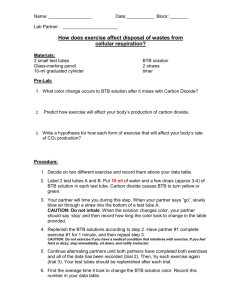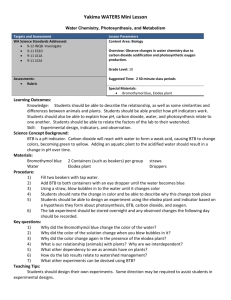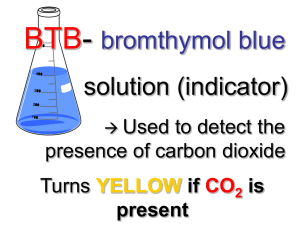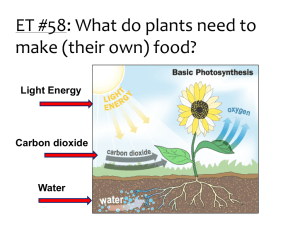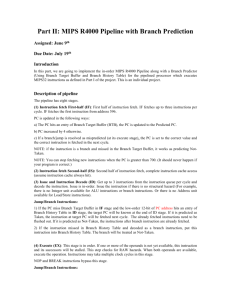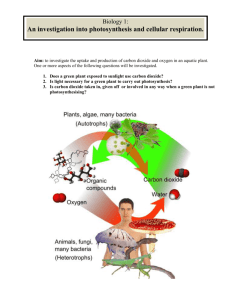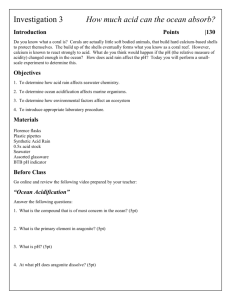2 Elodea Lab
advertisement
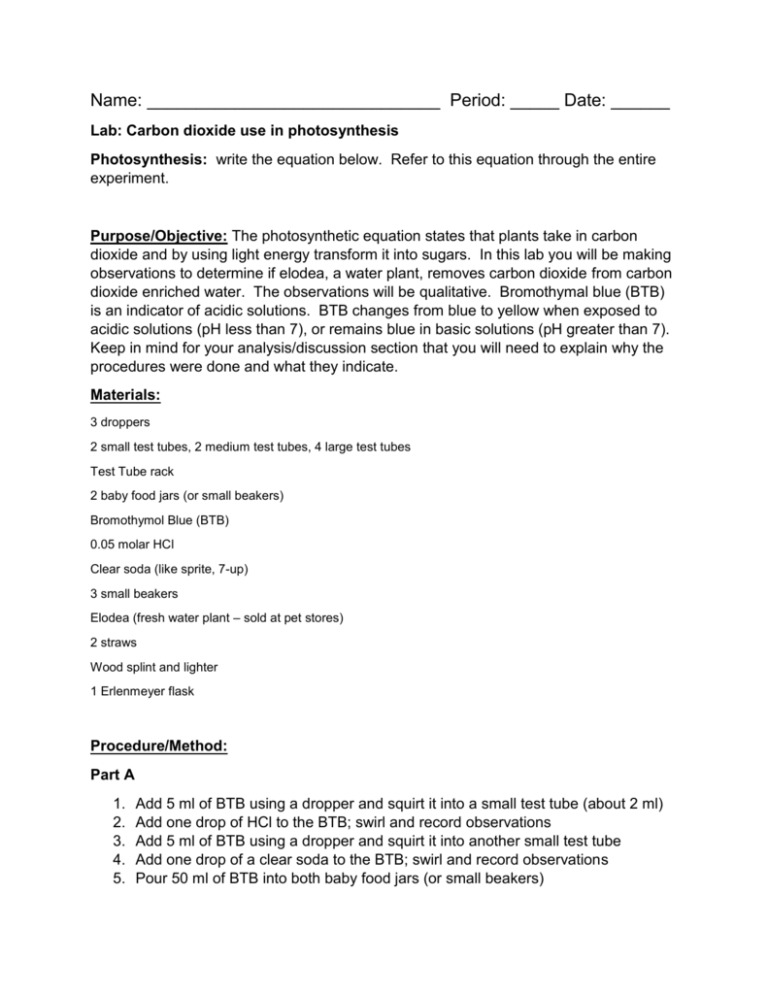
Name: ______________________________ Period: _____ Date: ______ Lab: Carbon dioxide use in photosynthesis Photosynthesis: write the equation below. Refer to this equation through the entire experiment. Purpose/Objective: The photosynthetic equation states that plants take in carbon dioxide and by using light energy transform it into sugars. In this lab you will be making observations to determine if elodea, a water plant, removes carbon dioxide from carbon dioxide enriched water. The observations will be qualitative. Bromothymal blue (BTB) is an indicator of acidic solutions. BTB changes from blue to yellow when exposed to acidic solutions (pH less than 7), or remains blue in basic solutions (pH greater than 7). Keep in mind for your analysis/discussion section that you will need to explain why the procedures were done and what they indicate. Materials: 3 droppers 2 small test tubes, 2 medium test tubes, 4 large test tubes Test Tube rack 2 baby food jars (or small beakers) Bromothymol Blue (BTB) 0.05 molar HCl Clear soda (like sprite, 7-up) 3 small beakers Elodea (fresh water plant – sold at pet stores) 2 straws Wood splint and lighter 1 Erlenmeyer flask Procedure/Method: Part A 1. 2. 3. 4. 5. Add 5 ml of BTB using a dropper and squirt it into a small test tube (about 2 ml) Add one drop of HCl to the BTB; swirl and record observations Add 5 ml of BTB using a dropper and squirt it into another small test tube Add one drop of a clear soda to the BTB; swirl and record observations Pour 50 ml of BTB into both baby food jars (or small beakers) 6. In jar (1) blow bubbles in the BTB until a color change occurs. RECORD the time it takes for the color change. Do NOT throw away the BTB. 7. In jar (2) blow bubbles in the BTB AFTER doing 3 minutes of exercise (run in place/jumping jacks/push-ups). RECORD the time it takes for the color to change. Do NOT throw away the BTB. 8. Observe the demonstration with lighted wood splint. Using an Erlenmeyer flask, tilt it over a burning wood splint to capture the smoke. Quickly turn the flask upright and add approximately 15 ml of BTB. Swirl and record observations Data Table: Observations of BTB Observations BTB BTB BTB BTB BTB 1 drop of HCl 1 drop of clear soda Time of bubbles Time of bubbles with exercise Burning wood splint Time: Time: Part B 9. Label 4 large test tubes A,B,C, and D 10. Pour the bubbled enriched BTB (yellow BTB) from steps 6 and 7 into test tubes A, B, and C (combine all of the students BTB in order to fill all four test tubes) 11. Pour blue BTB into test tube D 12. Place approximately 15 cm of Elodea into test tubes A, B, and D. Elodea should be in the dark up right up to the start of this portion (this needs to be done so that the dark reaction of photosynthesis will not affect the results) 13. Stopper all 4 test tubes and immediately place test tube B into the dark (closet) 14. Place remaining test tubes (A, B and C) in the sun light 15. Record observations after 2 days Data Table: BTB with Elodea Observations Test Tube A Test Tube B Test Tube C Test Tube D Yellow BTB, Elodea, + light Yellow BTB, Elodea, in the dark Yellow BTB only + light Blue BTB, Elodea, + light Analysis (1) What controls were used in Part A of the experiment? (2) What specifically is in the smoke that causes the reaction between BTB and the soda? (3) How did the reaction with the bubbles and exercise compare with the bubbles with no exercise? What caused the reaction to occur? (4) What were you capturing with the wood splint that caused a reaction with the BTB? Explain your reasoning. (5) What was the independent variable in PART B of this experiment? (6) What was the dependent variable in PART B of this experiment? (7) Which test tube(s) reacted? And which test tube(s) did not react? (8) Explain the results of question 7. (Remember the photosynthetic equation). (9) What was the purpose of Test Tube C? (10) Explain why did Test Tube D behaved the way it did? Conclusion Explain how the two experiments demonstrate the process of photosynthesis? Include your data to support your conclusion.
